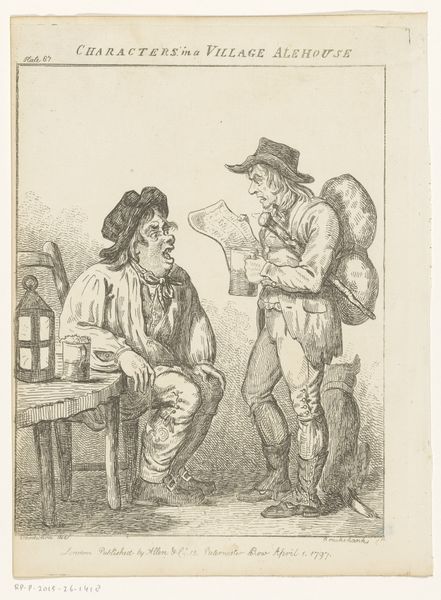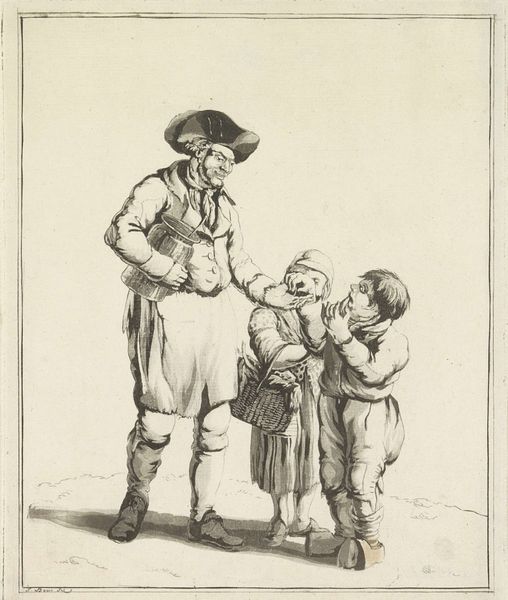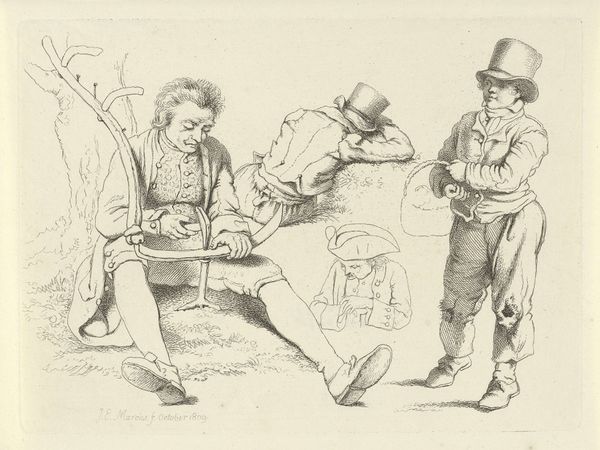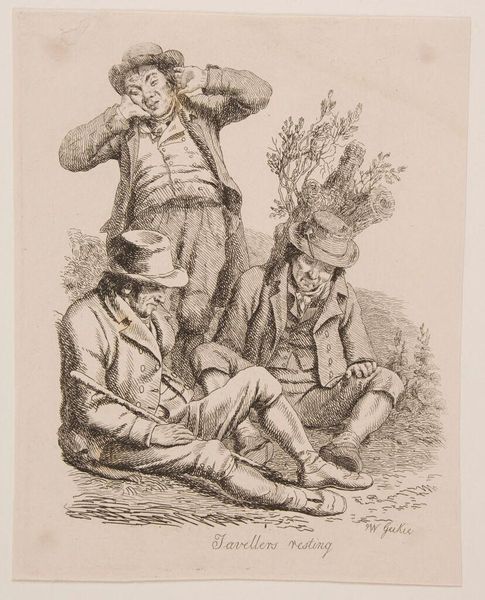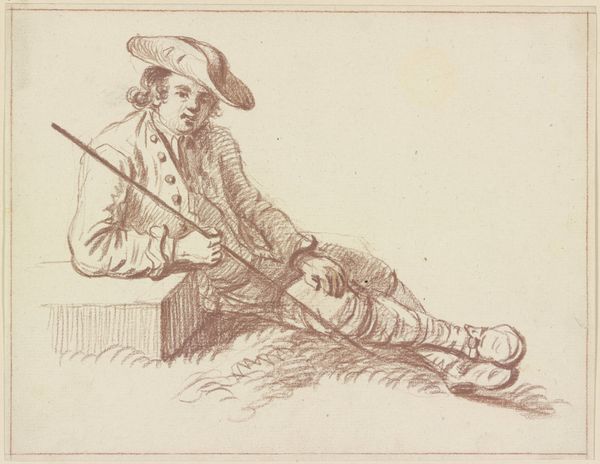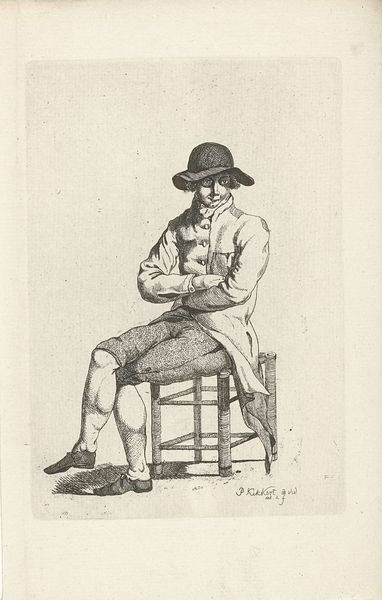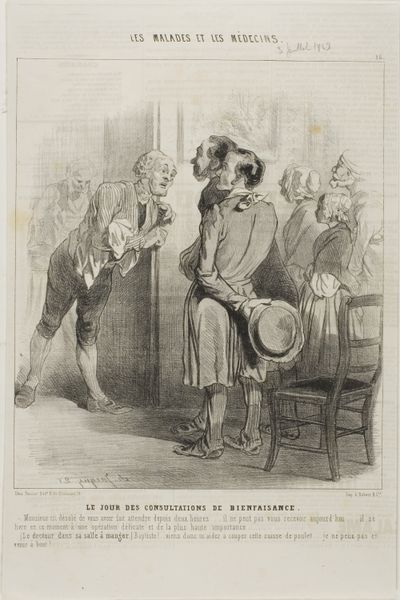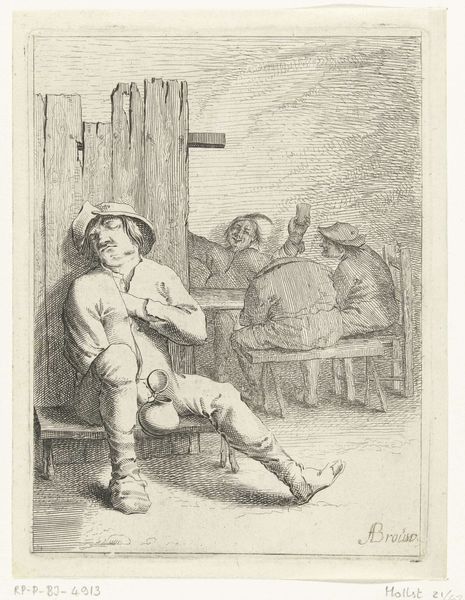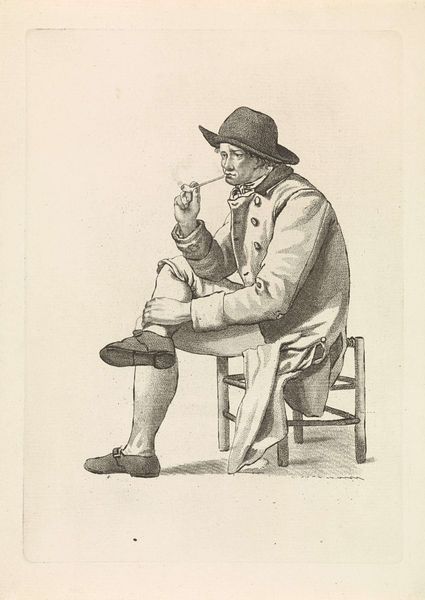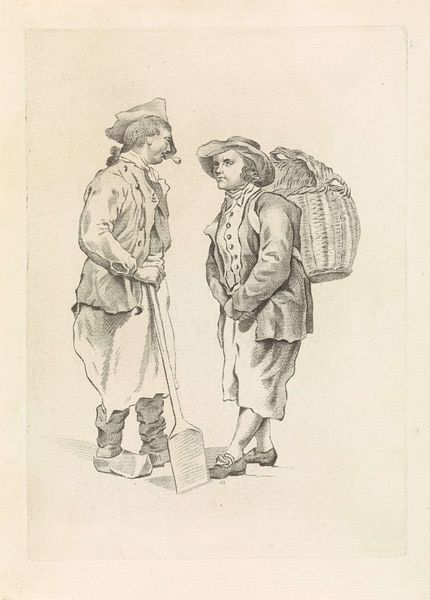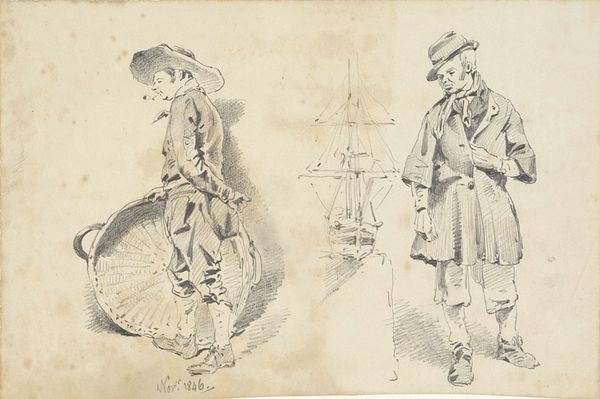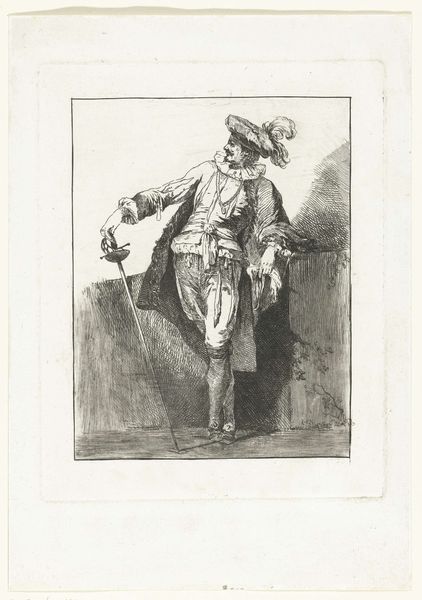
drawing, print, etching
#
portrait
#
drawing
# print
#
etching
#
pencil sketch
#
figuration
#
romanticism
#
pen-ink sketch
#
genre-painting
Dimensions: height 212 mm, width 160 mm
Copyright: Rijks Museum: Open Domain
Editor: This is "Zeeman in gesprek met een jonge vrouw," attributed to Mathias de Sallieth, dating anywhere from 1772 to 1833. It's currently at the Rijksmuseum, a print – an etching, specifically – depicting a sailor in conversation. The rough line work almost suggests a sketch-like quality. What stands out to you in this image? Curator: I’m immediately drawn to the process and implied labor here. This isn’t some grand oil painting commissioned by the elite; it’s an etching, a readily reproducible form of art. Consider the social context. Who was consuming these prints? Was it a burgeoning middle class interested in depictions of everyday life, like this sailor? The lines themselves, the "roughness" you mention, speaks to a certain efficiency of production. How does that potential mass appeal shape our understanding of the art itself? Editor: So you're suggesting the *means* of production influenced the art's style and potential audience? Does that impact its value? Curator: Absolutely. It challenges the traditional hierarchy, where unique, handcrafted pieces were deemed inherently "higher" art. Here, the artist, de Sallieth, is using a reproductive technique. We must think about the paper, the ink, the press—the entire material process behind the final image. What sort of distribution networks might have been available at the time? Where these prints were consumed versus where "fine art" paintings ended up being consumed? These questions inform the nature of the art itself. Consider that even now prints democratize images of artworks; were such images accessible and widely viewed, or something more controlled and limited? Editor: That makes me see it in a completely different light! The act of etching itself becomes part of the story. Curator: Precisely! We're not just looking at a pretty picture; we're examining a material object that embodies a particular moment in social and technological history. Editor: I will definitely consider printmaking as more than just reproduction from now on. Thank you.
Comments
No comments
Be the first to comment and join the conversation on the ultimate creative platform.

